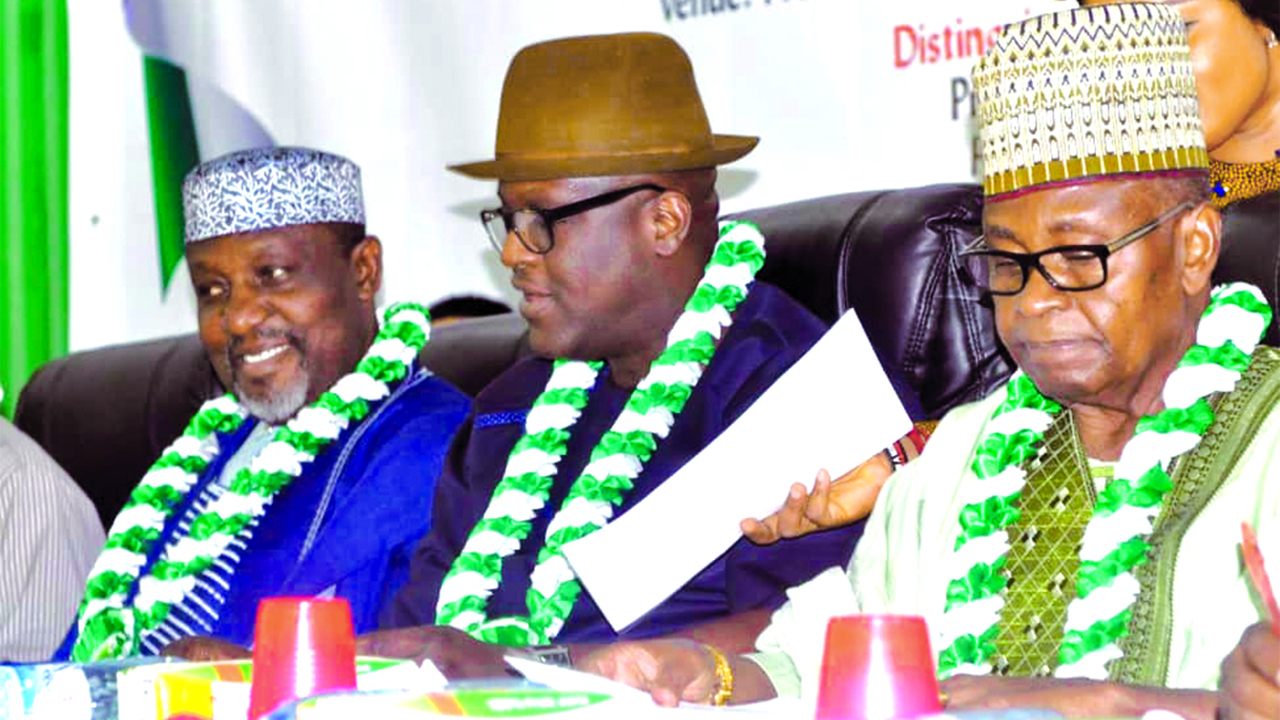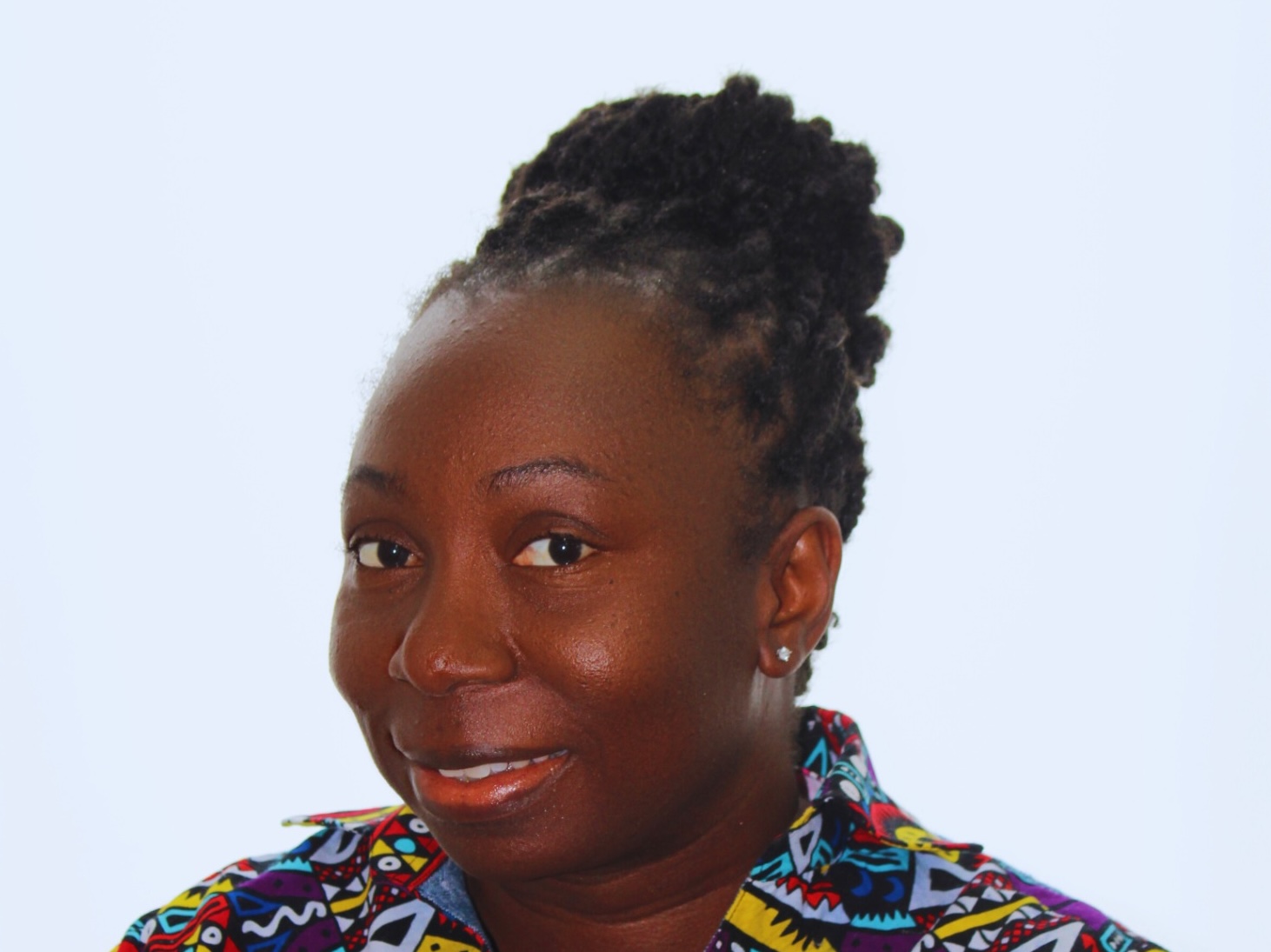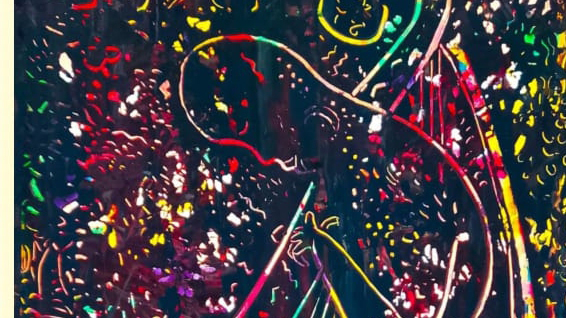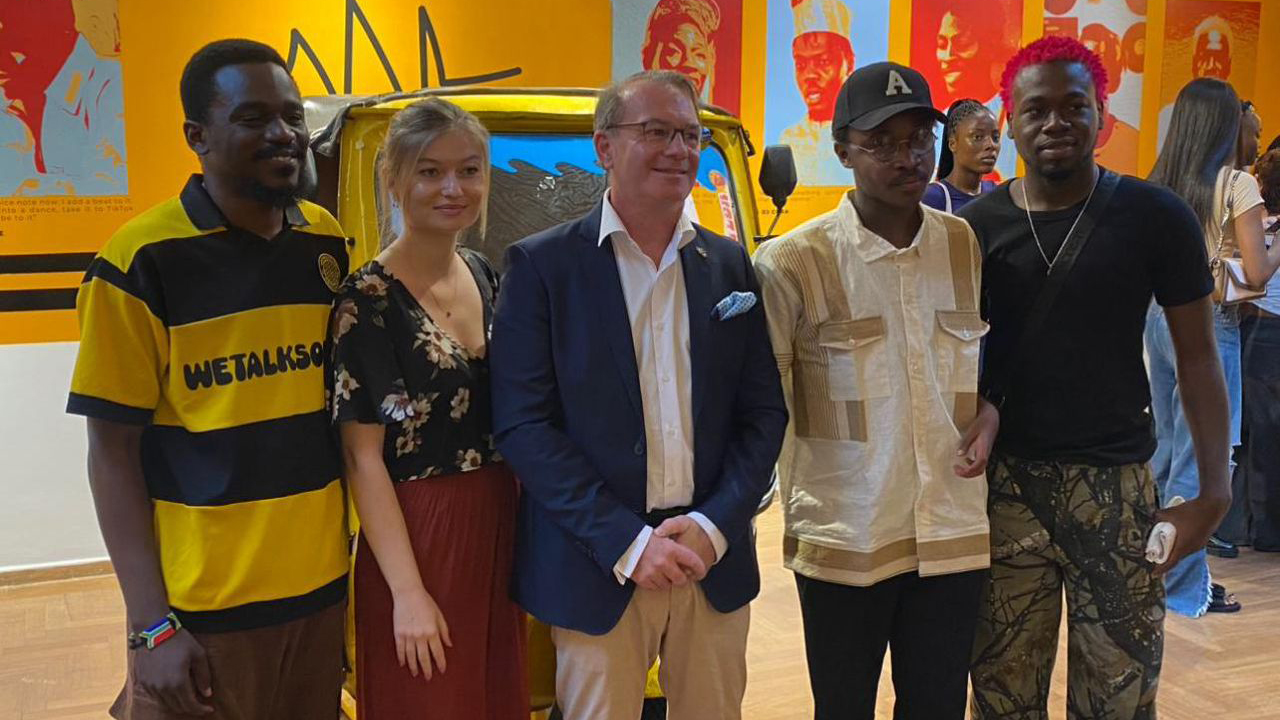
Buhari, who spoke at the 12th National Gallery of Art (NGA) Annual Distinguished Lecture, in Abuja, recently, noted that many issues challenge the development of art in Nigeria today, paramount of which are: The place of formal and (or) informal art education, the consequences of not having a national edifice for contemporary and modern artworks, the problem of managing art collections, the place of professional practice and the challenge of art forgeries.
The first speaker was Professor Ikenna Nzimiro who spoke on the topic, Culture, Creativity and the Challenges of Development while the last speaker was Professor Dele Jegede (now Professor Emeritus of Art and Art History, Miami University Oxford, OH, U. S. A.) who spoke on, Imagination.
To Buhari, the use of the expression ‘formal education’ is a construction of western culture, perhaps, to make a distinction between western forms of education, which is considered superior to other forms of education. He said that it is, therefore, important to be conscious of this narrative and to engage it critically.
In raising his observation as an art teacher, who is involved in producing artists many of who do not appear to be as visible on the cutting edge art festivals, prized competitions, residencies and workshops and auctions as their so-called self-taught artists, he asked: “Are we witnessing an emergence of conflict in these forms of art training? Are there issues that demand the need to interrogate our curriculum and teaching methods? In formal art education, the National Universities Commission (NUC) ensures that the curriculum is subject to review every five years.”
Whether this is effective or has lost its potency due to its routine nature and other Nigerian factors, to him, is for another discussion.
Buhari is convinced that these issues are at the core of some of the challenges facing formal art education and education in general in Nigeria today.
“In a formal art school, the students are taught theories of art, aesthetics, modernism, postmodernism, historicism, romanticism, symbolism classicism, concepts, techniques and characteristics of materials, etc. When we refer to concepts in art we often consider taste, perception, harmony, gaze, kitsch, elegance, eroticism, etc. These are some areas of art education that a self-taught artist may not be conversant or exposed to.”
According to the art teacher and scholar, “while a self-taught artist may not be able to subject his/her work to academic discourse as one who went to a formal art training may be, the artist with formal art education is able to verbalise on his/her work.”
For Buhari, “the advantages and disadvantages of formal art education considered together create importation information that offers, on a whole competitive edge to a self-taught artist.”
He said, “one of the most critical advantages for a self-taught artist under informal art education is that the person is not encumbered by a degree or certificate in view. This consideration alone creates special freedom to go beyond the horizon of a structured art programme. This is a positive edge that may inform the freshness of the type of works we see emerge from their studios. So, in our art school and indeed in educational pedagogy we must find a way of creating a balance between knowledge acquisition and attainment of good grades.”
Buhari said the critical role before all art institutions now is to have an educational system that is organic, open-ended and dynamic, but also, with a capacity to be able to respond seamlessly to the realities of life. The academic said in today’s knowledge and an information-driven world where it is not what you know but when you know it, a rigid educational system may be obsolete.
He also canvassed the marriage of formal and informal education in the next art curriculum, as this appears to be the best way forward. “In Zaria, we were able to create an exit window for our students to work outside the curriculum. The irony is that that window is defined in the curriculum and it suffered a diversity of interpretation by different lecturers, as should be expected with issues of innovation.”
He disclosed the consequences of not having a national edifice. He called on the government to urgently fast track the building, at least one national edifice for contemporary art in Abuja, with a profile that can accommodate the volume and diversity of artworks created in our vibrant art scene. “It is important to rescue them from disappearance or relocation to other cultural arenas or even outright destruction. The profile and cultural significance of these works speak to the authentic Nigerian dream,” he said. “Artists and art collectors would need to take serious consideration of where and how their works are stored and preserved. This is important; as it would have direct implications on the value placed on them and the role they play not only the development of our fragile democracy but also in the development of human civilisation as a whole. It is delightful to see that collectors like Prince Yemisi Shyllon have set the stage with an impressive museum edifice at the Pan-Atlantic University. His Highness, The Obi of Onitsha would soon be commissioning his Museum, Chimedie Museum, in the heart of the business and cultural city of Onitsha soon.”
The future of private museums and galleries is bright. But this picture will be perfect private and public initiatives synergise to establish the mother of all National Gallery of Contemporary And Modern Art.
He said, “without a national edifice it would be difficult to build a coherent art collection that could serve as a tool for nation-building. A physical edifice holding artworks that represent the artistic practice of a country, both the building and the works can easily and effectively be deployed to build unity, integration and a national dream. The edifice could become a symbolic image that a country can be used to protect our shared cultural heritage.”
He gave the example of Rwanda that used their Museum of Memory as a medium to build reconciliation, healing closure and national integration.
A national edifice is able to rescue masterpieces of a country’s creative endeavours transfer them to future generations their tangible and intangible cultural value.
“A national edifice is a repository of artworks that by their nature require dedicated and appropriate spaces for storage, display and access for educational purposes, tourism, and celebration of human civilization,” he retorted.
According to him, “the absence of a national edifice to house Nigerian artworks is denying the diverse peoples of Nigeria an opportunity to see how they are connected by their cultural origins. A national edifice is able to advance the idea of a Nigerian dream. It can make the people see tomorrow today and really own the country with passionate patriotism. The future of Nigerian art and the role it would play in nation-building without a national edifice will continue to be delayed.”
Prof. Buhari also discussed the challenges of managing art collections. He revealed that it is a serious business. That is why museums and galleries are set to do. This involves storing the art artworks in an appropriate space of the facility. The storage would have as simple as shelves or cabinets and could be as sophisticated as having mechanical or digital storage system, depending on what type of artworks we are dealing with.
“The next important aspect of managing a collection is to ensure that the works are kept in good condition. You call this preservation. This is a scientific area because it involves determining the right temperature that each work requires. The type of casing and lighting conditions that suit each work or body of works is a major concern in the management of art collections,” Buhari retorted. “Restoration of artwork comes with a simple to complex decision making with legal considerations that must be thoroughly considered. My experience has shown that once an artist has finished artwork if it stays in his/collection over time, they work tend to suffer neglect at the cost of the recent work on the easel that is yet to be finished. They are kept in a corner, may have gathered dust and some already showing signs of deterioration and needing restoration work. Art institutions manage works better perhaps because of the structure set up to do just that. But funding and managerial incompetence can affect the works and render the works worthless.”
He said documentation is an area that defines an artist’s professional orientation. This is irrespective of whether their works are ephemeral. Through disciplined documentation, an artist does only follow his/her personal growth but can also be able to provide resource materials for academic research, ensure easy detection of reproduction, or forgeries. Along with this thought, it would be important for an artist to issue letters of provenance on each work transacted for sale, loan or exhibition.
An artist ought to take very seriously documentation the business of documentation, storage, preservation, insurance, and security of his/her work. If an artist or a collector is unable to do this, where you can, engage someone to manage your collection. The question arises; how many works would you have collected before you need a manager? The answer would depend on the artist or collector.
Painters that succumb under the pressure of reproducing the same work simply hurt their practice and raise issues of credibility on their practice. Reproductions are not the same as copies; where this is done, with high-quality digital printing that can be done on any surface, it is important that reproduction should clearly be so stated.
He equally stressed on challenge of art forgeries. To him, it has many angles bordering on professional practice, intellectual property issues, legal implications and the complex world of art itself and also often carries with it sensational displays and complex politics.
According to the art teacher and scholar, “when a work of art is reproduced in any medium to look like the original or belonging to a particular artist with the purpose of gaining recognition/acceptance, deceive or offer for sale for monetary gain, is said to be a forgery.
“We must recognise that art forgery is now a growing business in Nigeria and we should be concerned about its negative consequences. For example two of Gani Odutokun’s works, Dialogue with Mona Lisa, gouache on paper and another, Untitled, 1988 oil on board, which was used on the cover of an auction catalogue was forged.
While Dialogue with Mona Lisa was forged, the one that appeared on the cover of an auction catalogue used the artist’s name. I am a privileged owner of some pieces of the destroyed fake “Dialogue with Mona Lisa” as some kind of souvenir. It is sad to note that some of Enwonwu’s are fakes. Delightfully one of the children, an artist himself, Oliver, is on the scene to assist in protecting the late artist’s legacy.”
He said the soil that breed forgeries would include a vibrant art market, like the one we have in Nigeria today. At art exhibitions, auctions and even commissions are sending artists smiling very loudly to the banks. Prices of artworks are on the rise, even with a challenging economic environment, it seems that the rules do not apply with art.
This explains the high demand of Ben Enwonwu’s works and coming closer home here, Gani Odutokun’s continue to enjoy high prices and demand. The works of these two artists have been subject of forgeries with double-edge effects. What I mean is that the demand for their works continues to grow while at the same time, they have been subject of cautious purchase and interest by collectors. The third factor may appear extreme but is also real, which is an attempt to deliberately hurt the market or practice in the arena, call it cultural warfare. This is where all hands must be on deck to ensure that we frustrate the development of forgeries.
To deal with art forgeries, the artist has to have a disciplined and consistent documentation regime, or what is sometimes referred to as “artist’s catalogue raisonné.”
In his goodwill message, Senator Rochas Okorocha, Chairman, Senate Committee on Culture and Tourism, commended NGA for organising such a highly intellectual exercise that is engaging, rewarding and throws up issues for further discussion and deliberations on visual arts.
According to him, “event such as this provides us with the opportunity to reiterate the intrinsic relationship between modern art and economic development and to underscore the urgent need to pay priority attention to harnessing the vast potentials in the creative art generally and visual arts in particular.”
He also appreciated efforts of NGA in carrying out its mandate, especially in the last one year in spite of budgetary constraints. “I must also commend NGA for bringing back this very important programme, which I believe will enrich our minds. I urge the management to continue on this path of restoring its other programmes which have been in the cooler for one reason or the other.”
Senator Okorocha promised to liaise with the House Committee Chairman on Culture and Tourism, Hon. Omorege Ogbeide-Ihama and members of Committees “to facilitate laws that would fast track the growth and development of modern art in Nigeria. We hope to make art a viable sector that will contribute immensely to Nigeria’s GDP.”
In his remark Chairman, Governing Board, National Gallery of Art, Ambassador Umaru Azores Sulaiman, said since the assumption of office of Dr. Simon Odey Ikpakronyi, NGA has been carrying out its mandate with vigour and enthusiasm.
In the period under review, NGA exhibited the artworks and presented standard books on notable art scholar and painter, Prof. Jimo Akolo; outstanding artist and architect, Demas Nwoko; all in Abuja and artworks of Joseph Alufa Igbinovia, carver of the replica of Queen Idia mask used as the symbol of FESTAC ’77 in Benin.
Also in Benin, NGA held a major exhibition of the outdoor sculptures of prominent Benin artists tagged, Art of Benin Kingdom. Earlier last year, the NGA executed other major programmes.
“I want to appeal to both of you to make adequate budgetary provisions for NGA to enable it to reach out to more geo-political zones in the country with its programmes. This is particularly important at this point when the country is moving away from relying solely on oil as its main source of revenue to non-oil sectors.
“Culture and Tourism need all the financial muscle it can get from government to blossom and become a veritable foreign exchange earner for the government.”






